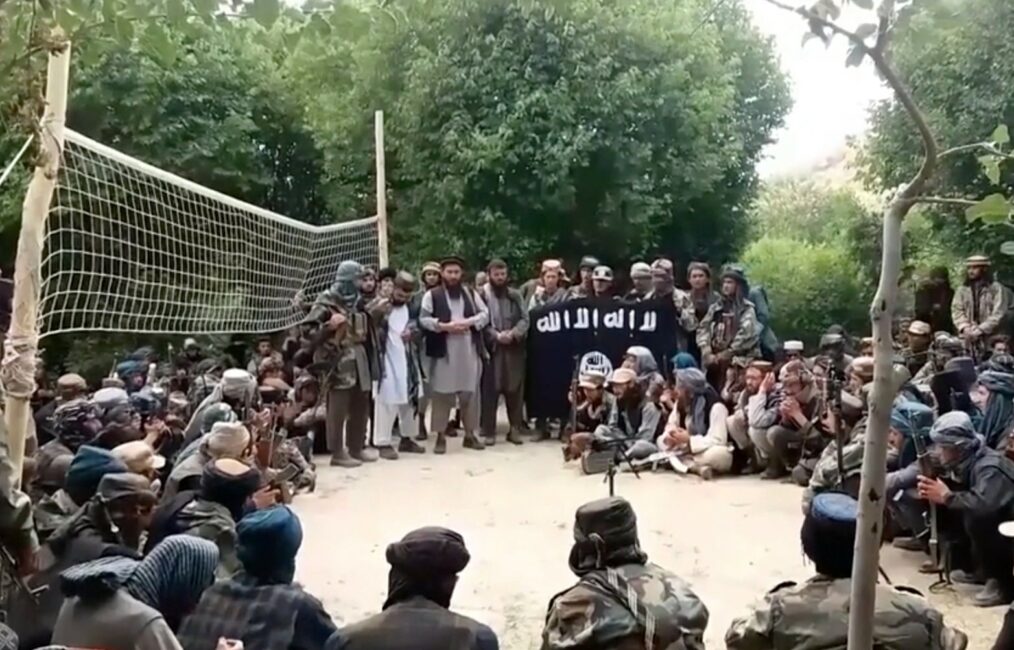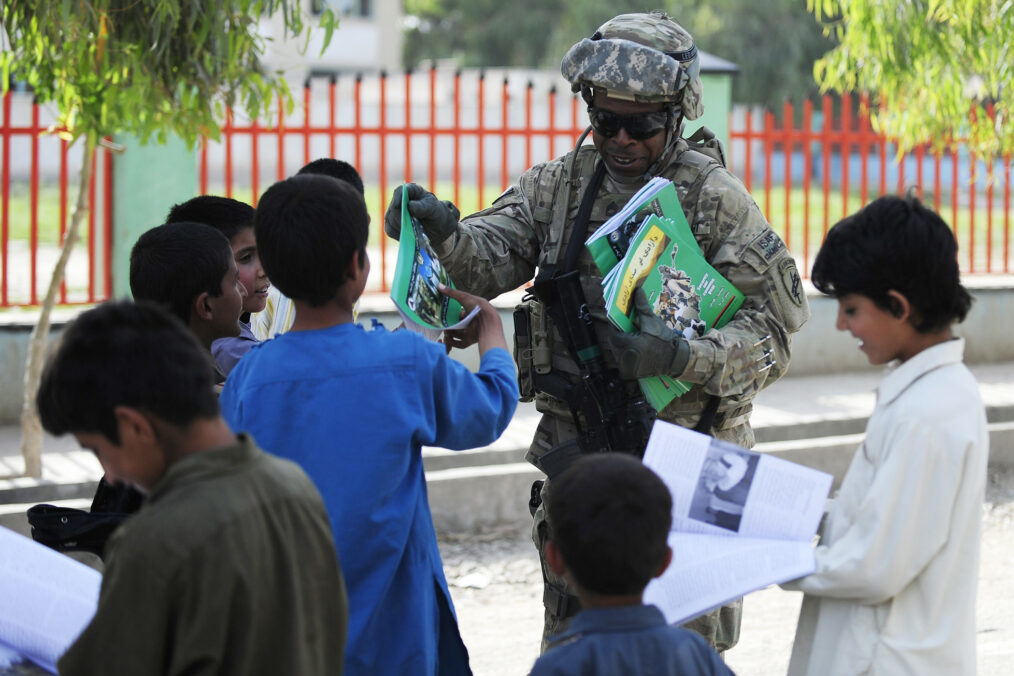With just over 77% of its government budget dependent on foreign aid, Afghanistan’s prospects of establishing a self-reliant state in the near future appears bleak. In spite of the billions spent by individual countries and multilateral institutions, the question of how to sustainably use donor funds to embed resilience in Afghanistan has confounded policymakers for decades, culminating in several reports highlighting the country’s “phantom aid” problem.
After receiving much criticism for its sudden departure from Afghanistan in the aftermath of the Cold War, the United States has since spent anywhere from $800 billion USD to upwards of $1 trillion USD in what remains America’s longest war. Of these expenditures, just 14% is constituted as foreign aid, with 75% of this aid earmarked as military/security assistance, as opposed to economic aid.
Yet, a cursory review of Afghanistan’s developmental woes suggests many of its ailments remain tied to economic obstacles like chronic unemployment, corruption, poor provisioning of government services, and an overreliance on the agricultural sector. Incessant frustrations from the donor community have led to fatigue, which has been exacerbated by political infighting within the Afghan government, as well as an unclear strategy or criterion for when international forces may exit the country.
This perception of little to no return on investment (ROI) for Western taxpayers has made foreign aid a recurring target among populist candidates and parties demanding retrenchment from “forever wars”. In the case of the US, foreign aid to Afghanistan reached its peak in 2012 at $13 billion USD, a sum that was followed by steep cuts that now amount to just under $5 billion USD sent in 2019.
Regardless of the outcome of intra-Afghan dialogue, the continuation of gradual cuts toward aid (which began during the second of the Obama administration) seemingly conflicts with the public-facing objective of the development community, which ostensibly seeks to address underlying socioeconomic factors that feed into conflict. USAID figures demonstrate that donors remain fixated on funding kinetic solutions to resolve insecurity in Afghanistan, as well as neighboring Pakistan, which has seen its US foreign aid inflows dwindle in a similar fashion.
A peace deal cinched with the Taliban won’t necessarily result in increased revenues or even decreased expenditures from the government. Instead, Afghanistan’s fragility suggests injections of aid will be most critical in the months and years after an agreement is reached and statecraft can begin in earnest. As the appetite toward military-aid dissipates, donors should turn to alternative financing options when allocating funds, including “Aid for Trade” and Conditional Cash Transfers.
Aid for Trade
The Organization for Economic Co-operation and Development (OECD) defines Aid for Trade as an effort “to align donor and partner countries’ strategies in promoting trade as a leverage for poverty reduction.” In short, aid for trade seeks to reduce the cost of facilitating goods and services and promote the recipient nation’s export sector by addressing infrastructure deficits and providing technical assistance to the private sector. Such a strategy has proven successful in funding efforts like port upgrades to improve maritime trade, expanding access to affordable Internet services, and digitization training for Small and Medium-sized Enterprises (SMEs).
In the context of Afghanistan, Aid for Trade can harness what has traditionally been the country’s greatest economic advantage: its geography. Notwithstanding its status as a landlocked state, Afghanistan sits at the nexus of some of the fastest-growing regions in the world, which provides opportunity to reap advantages in overland trade. Yet harnessing this advantage requires building the necessary physical and digital infrastructure that can support the reliable and safe transportation of goods withing Afghan borders.
At present, the standard mechanism for aid delivery has been conditioned on a number of restrictive measures that stipulate what can be purchased with the aid, and from whom it can be purchased from. Ostensibly, the logic behind the conditional aid was designed to create strict parameters that compelled accountability from the aid recipient. Yet, as exhibited by the “Waste, Fraud, and Abuse” reports published by the US Special Inspector General for Afghanistan Reconstruction (SIGAR), such conditions have not repelled opportunities for graft, which is often carried out through opaque procurement regimes that allow funds to disappear among the lengthy supply chain of contractors and sub-contractors.
Furthermore, conditional aid can often stipulate requirements that damage the recipient’s economy. This is particularly true in the case of food aid, where donor governments will use aid to pay their own farmers to export the products, which undercuts the prices that the agricultural sector in the recipient country can charge. Considering the fact that Afghanistan’s agricultural sector employs roughly 40% of the workforce and is responsible for contributing nearly one-quarter of the country’s GDP, reorienting aid to focus on productive investments (e.g. irrigation, equipment/materials, transportation) that lower the cost of trade is more likely to boost incomes instead of distorting local markets.
Conditional Cash Transfers
Though still conditions-based, conditional cash transfers (CCTs) differ from the status quo in that they tend to be far smaller in scope and scale. The “conditional” in this context refers to the requirement that the recipient fulfill a certain objective before the funds are released, which stands in stark contrast to other programs that deliver larger sums in shorter timeframes. The advantage of Conditional Cash Transfers is latent in the psychology of incentives, where signs of waste, fraud, and abuse can result in the immediate termination of future disbursements, giving donors more flexibility over their purse strings, while also encouraging long-term adherence to specified goals.
CCTs have proven successful in a number of policy realms, including decreasing homicides in Brazil, improving healthcare delivery to vulnerable children in Ghana, and incentivizing farmers across South America to cease the cultivation of illicit crops in favor of legal alternatives. For Afghanistan, CCTs can be especially useful in combating illicit poppy farming which fuels 90% of the world’s opium and heroin production. Though forceful eradication programs have been implemented, they have failed to make a dent in production, leading to an entrenchment and reliance on the opium trade to sustain rural household incomes.
The economic, political, and security ramifications of targeting poppy farmers has made the Afghan government reluctant to tackle cultivation of illicit crops. Yet, CCT programs provide a useful medium in establishing and sustaining evidence-based programs that have demonstrated efficacy in illicit crop eradication such as crop substitution programs supported by subsidies that are paid directly to farmers and that minimize institutional involvement.
The politicization of foreign aid is a consequence of misaligned objectives between donors and recipients, in addition to flawed and ineffectual distribution. Achieving such objectives requires recalibrating the criteria that donors use to both allocate aid and subsequently measure its efficacy. Though security remains pivotal, a lasting reconstruction agenda will depend far more on targeting aid toward economic initiatives that enable Afghans to gradually reduce their dependency on foreign aid, replacing it with sustainable revenues generated by the country itself.






